All of our trees are made using the Walt Youngman method that was taught to Ben from Warren Wright in New Zealand, see the story of the ‘Pendleton treemakers’ below
We use old growth Hoop pine that is slowly dried here for at least 2 years before it is used.
Trees are either covered with fiberglass by a professional in Toowoomba or by Ben with Rawhide
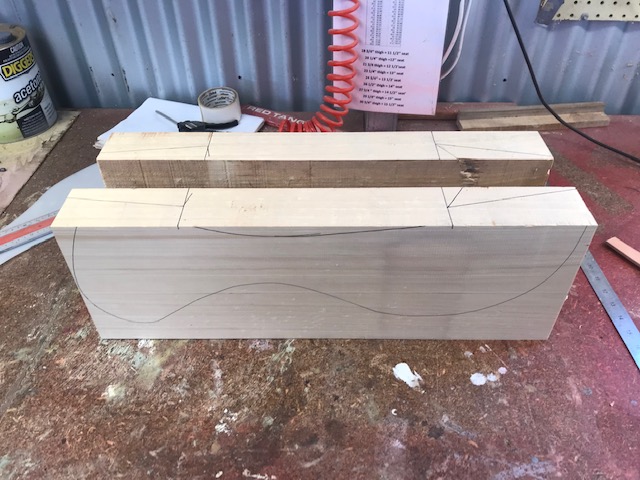
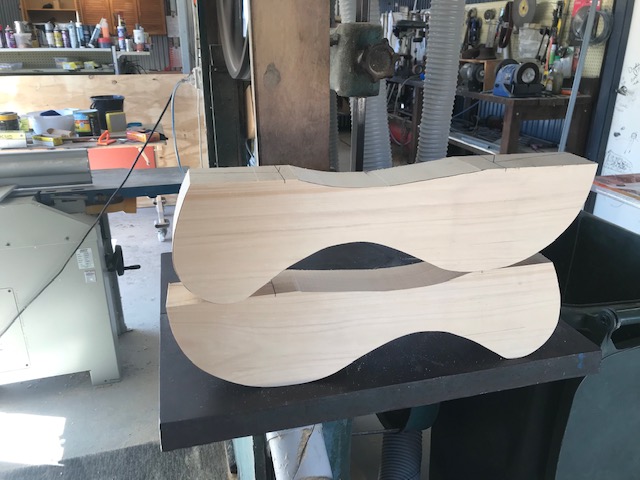
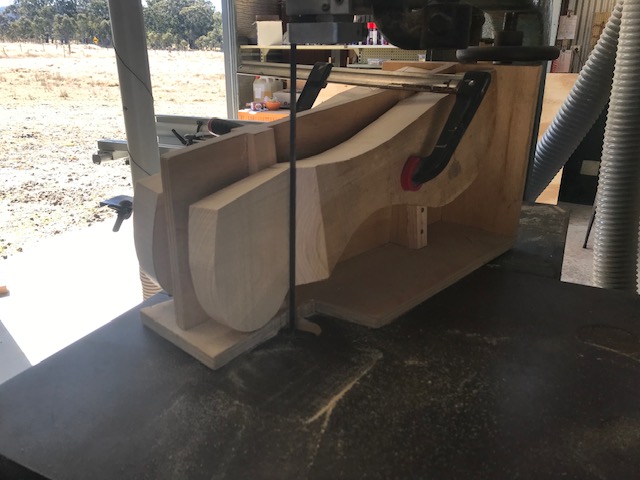
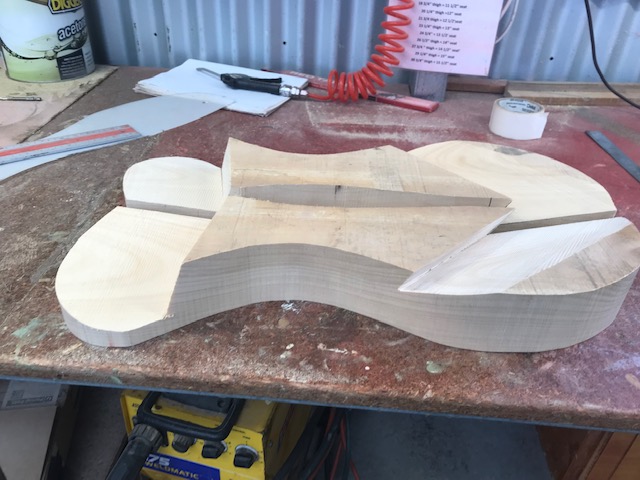
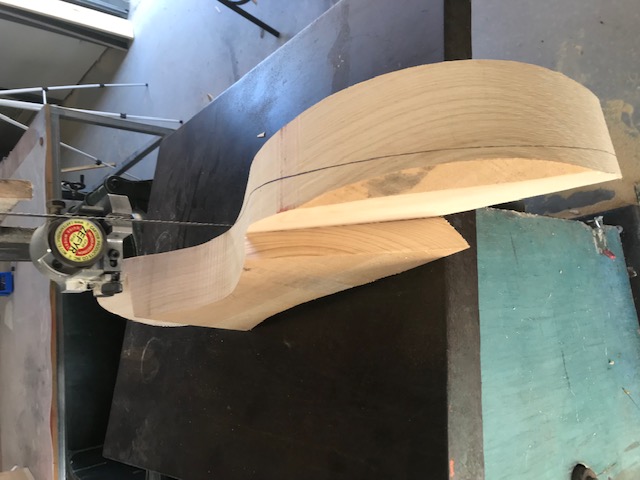

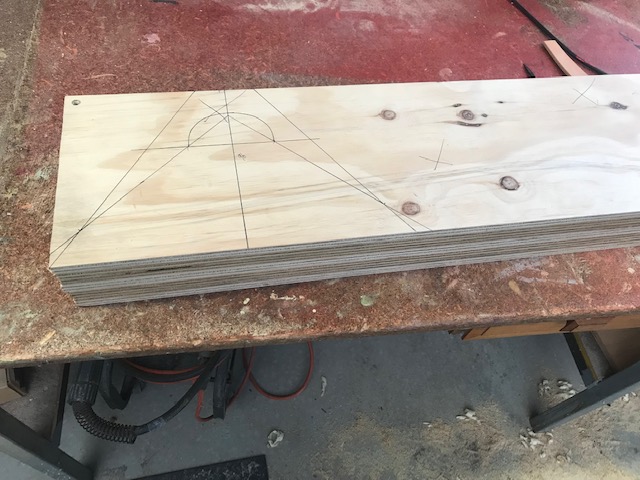
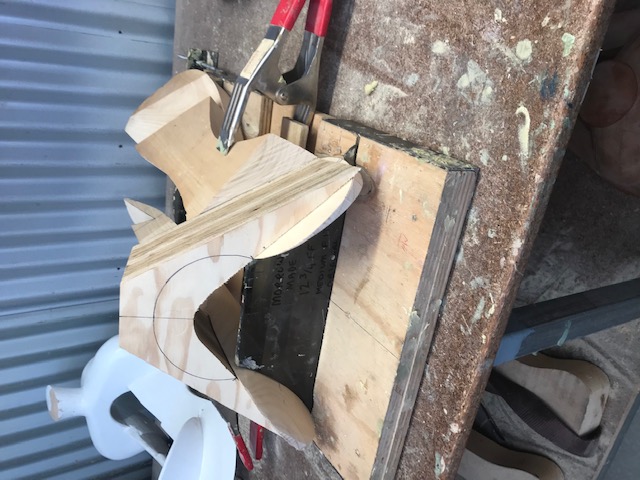
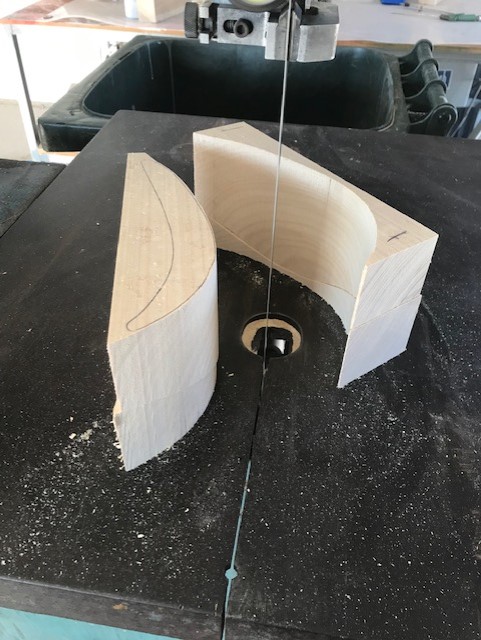
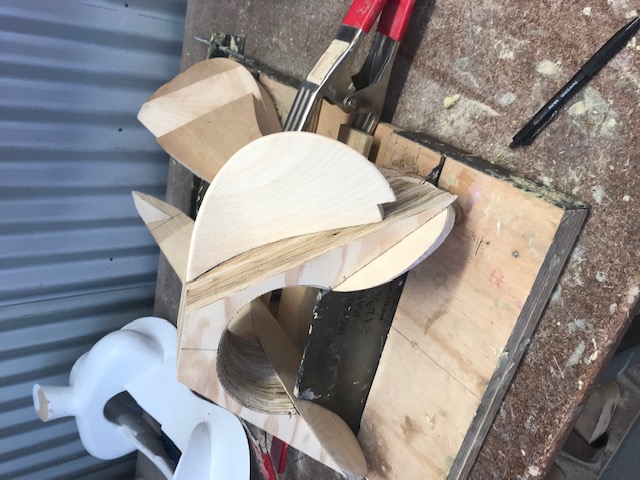
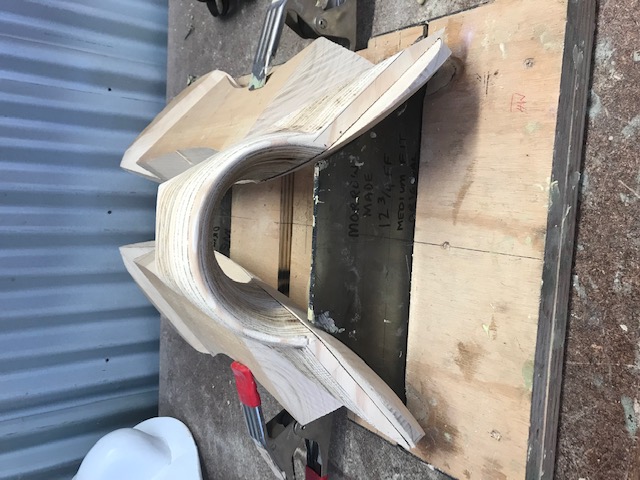

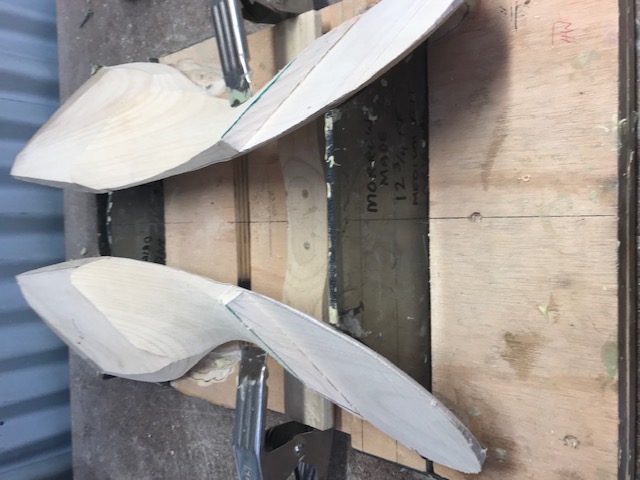
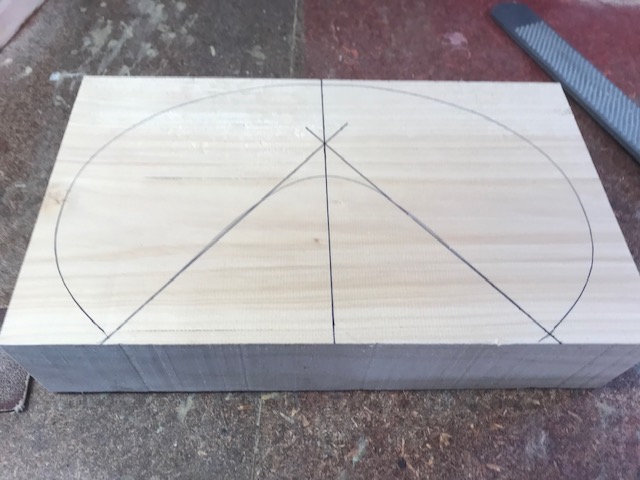
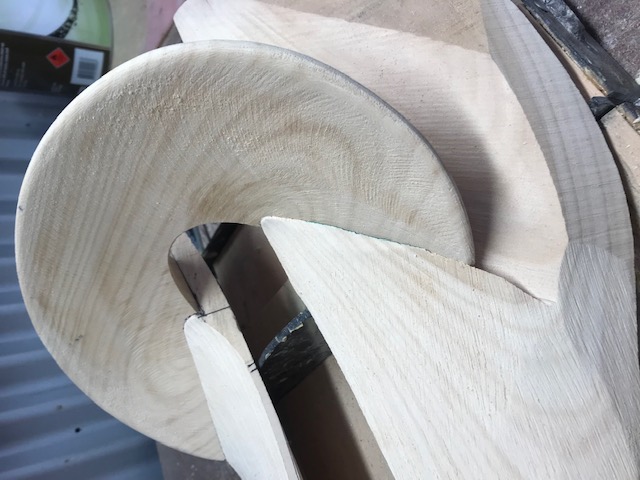
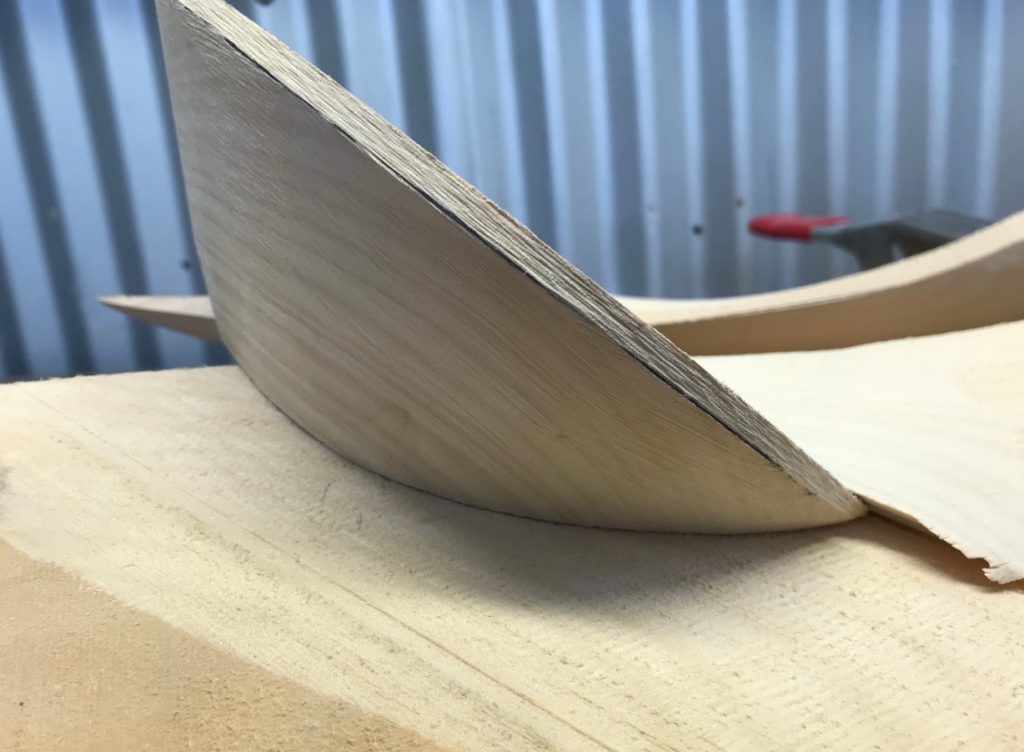
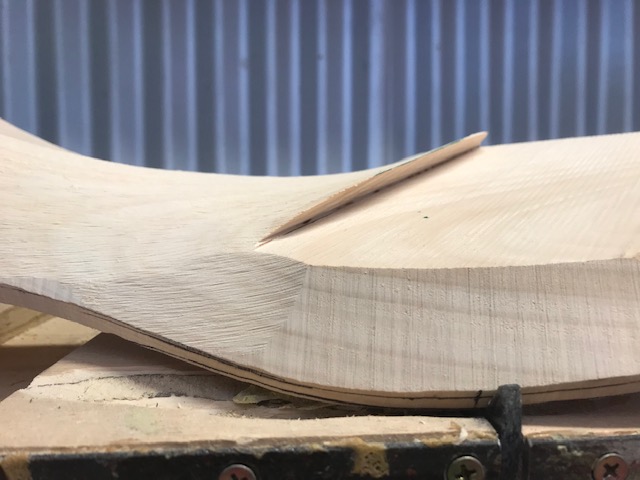
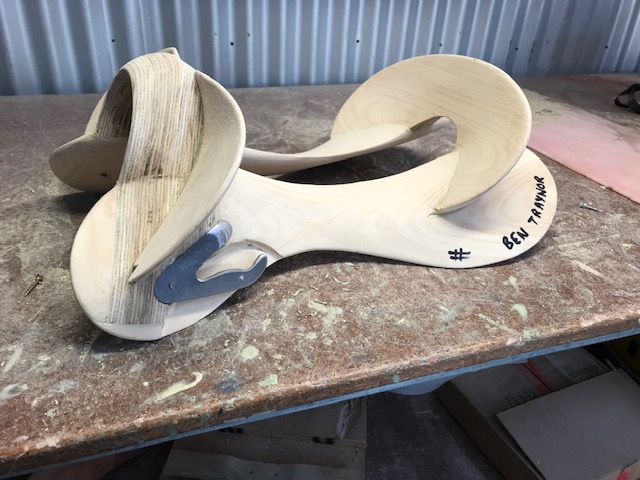
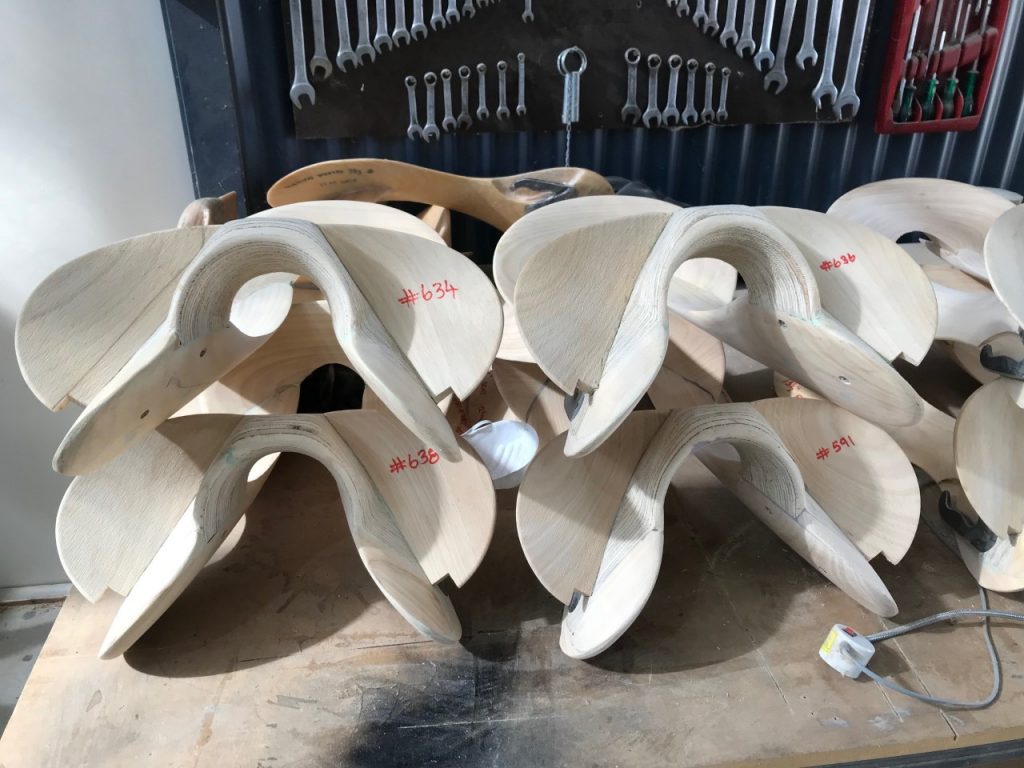
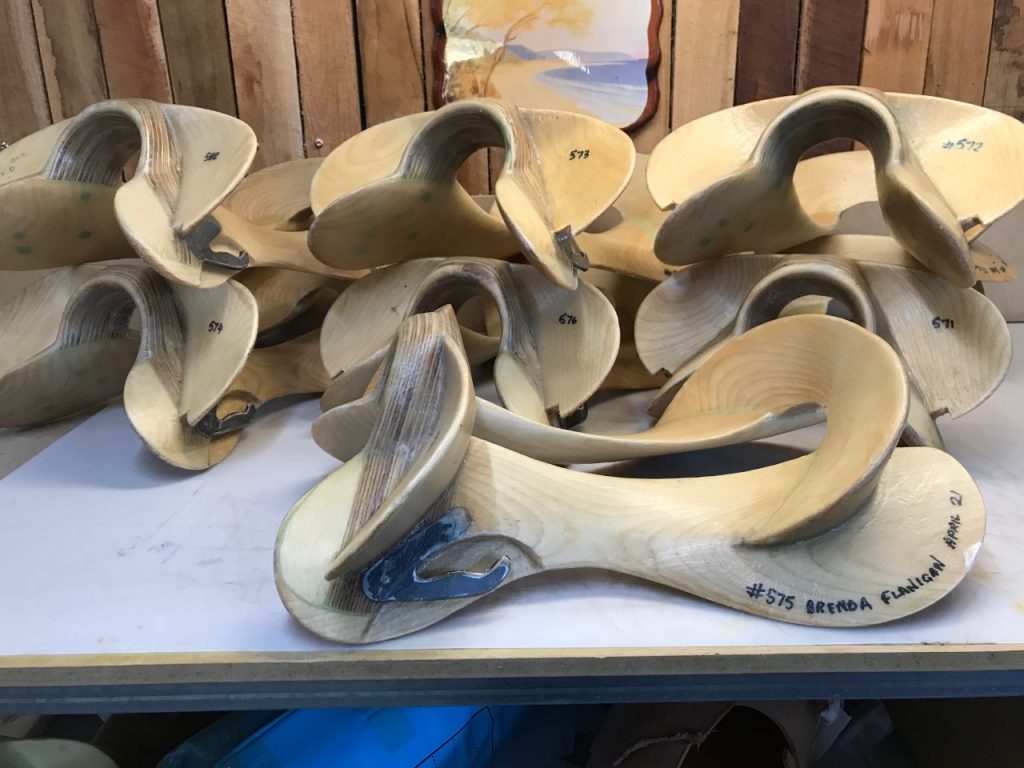
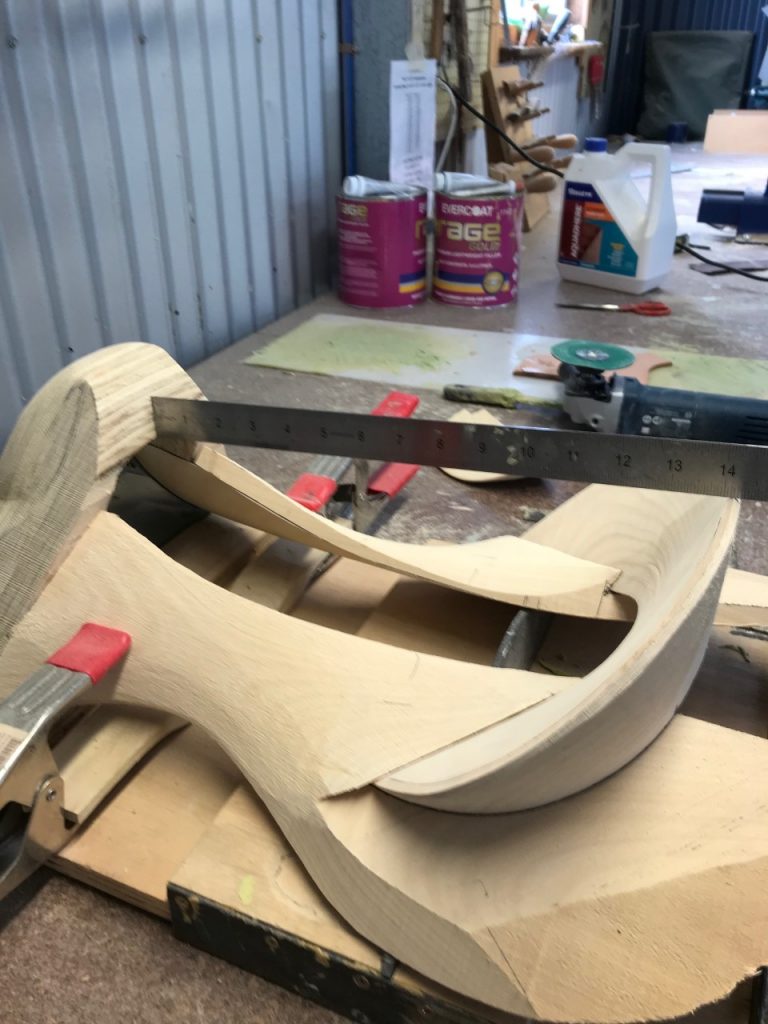
The Pendleton Treemakers
by Warren Wright 13 February 2006 May be copied by permission. Contact treemaker@clear.net.nz Special thanks to Bill Youngman, Dave Hamley, Bill, Duff, Randy & Robin Severe
Walter J. Youngman, Treemaker
The Youngman family originated from Germany, but moved to Russia in the late1800’s. Finding no respite from the demands to enlist in either country’s militia, the Youngman’s emigrated to USA in the early 1900’s. The family name was then anglicised to Youngman. They settled in the Palouse country of Washington State. Alex Youngman (born in Russia) married Anna K Poppenroth (born in Kansas). The Youngman’s had five children, two girls and three boys: Clara (Mrs Daniel Luft), Walter, Bernice (Mrs Floyd Shultz), Daniel and Carl. Walter James Youngman was the second in the family, born on 8 June 1907 at Endicott, WA. Endicott is a very small farming community in SE Washington State. It appears Mr Alex Youngman struggled to make a living and due to the ignominy of not being able to provide for the family, abandoned them to their own at an early age. Walter went to live with an uncle and aunt in Spokane, WA. He graduated from high school in Spokane and left home at sixteen (cf 1923) to work as an apprentice cabinet maker at the Dornbecker Furniture Co. in Portland, OR.
Ringhoffer Bros., Treemakers
Stephen and Joseph Ringhoffer resided at 516 and 512 West Elm Street, Walla Walla, WA., and operated their treemaking business from Elm Street there at least from 1881 to the 1920’s. Hamley & Co., the famous saddlemakers of Pendleton, OR. were obtaining all their trees from Ringhoffer’s, along with Victor Marden (The Dalles, OR) and TW Farrell (Ellensburg, WA). Ringhoffers were the treemakers who played an important part in the evolution of the swell fork trees (for Marden cf. 1904) as well as the Committee (Association) regulation bronc tree and the Form-Fitters (for Hamleys cf. 1919). It is possible that Ringhoffers were feeling the hard times in the mid 1920’s with a down turn in the tree business, and contemplated quitting the business altogether. Hamleys, concerned about their tree source, may have offered to buy out Ringhoffer’s, and shift the machines, jigs, patterns and tools over to Pendleton along with one of their treemakers and rawhiders. What is known for certain is that one of Ringhoffer’s treemakers (may have been one Ringhoffer brother himself) did come over to help Hamleys get their new treeshop up and running.
Daniel Luft, Rawhider
Daniel Luff was born in 1900 also in SE Washington State area and started his extensive career as a saddletree rawhider with Ringhoffer Bros. Dan married Walter’s elder sister Clara when she was 16 and Dan was 19 (cf 1919). Dan Luft shifted over to Pendleton about 1925 to assist Ringhoffer with the rawhiding in the Hamley treeshop. He lived in the house next door to the treeshop with his wife Clara. Dan set up the whole rawhide processing operation and started rawhiding trees for Hamleys. Thus was the PENDLETON SADDLE TREE CO. established as an integral part of Hamley’s, located on SW Dorian Avenue, seven blocks from Hamley’s Store. It is likely that Hamleys were looking for a suitable apprentice for the Ringhoffer treemaker to train up. Dan suggested his brother-in-law Walter, who was cabinet making already and had an obvious affinity to woodwork. So it was agreed by Hamleys to invite Walter over from Portland to begin his treemaking career at Hamley’s treeshop. The year was 1926 and Walter was 19. He lived at the back of the main Hamley Store where he also acted as night watchman. Walter married a woman who already had a son (not Walter’s). She later died. During the Depression years (1928-35) Walter played clarinet and saxophone in a small dance band which travelled the circuit in the Eastern Oregon area. In 1939 Walter meet Barbara Woodbeck at a Pendleton Round-Up dance. She lived at Vancouver, WA, and had come over to Pendleton on the train which brought large numbers of commuters to the Round Up. A romance developed and Walter often would travel in his car (8hrs) to Vancouver from Pendleton in the weekends to see Barbara and her family whilst they were courting. Walter was then living in the back of the treeshop, a spartan existence. He finally convinced her parents to allow marriage. They married in Vancouver, WA 16 March 1940. Walter was 32 and Barbara was 19. By the time US became fully involved with the War (Dec 1941), Walter and Barbara were the parents of William, born 12 May 1941, and the following year, Judith, born 26 October 1942. Walter had a passionate interest in the card game of poker. Rumour has it that he never was a good gambler, and it was during one card session at the local Elks Lodge that he lost the savings for the house. It caused a serious upset in the family. Rental housing was critically short in Pendleton at this time because of the influx of Airforce aviators at the local air base. Walter decided to tear down a barn just out of town and use the timbers to frame a house. The family moved into the unfinished shell and he proceeded to finish it around them. After he finished the house he built a good number of the pieces of furniture. Walter was also very active in the Pendleton Elks Lodge, a civic and social fraternal organisation. He worked his way through the officers’ chairs and was its exalted ruler at one point. Another of Walter’s passions was fishing. He fly fished in Eastern Oregon in the 20’s and 30’s when there were still trout to be caught. In later years he became very interested in steelhead fishing in the Columbia River system, and began to carve his own wooden fishing lures. He also had an interest in downhill snow skiing and was one of the founders of the first rope ski tow in Eastern Oregon. Walter’s greatest passion was without doubt woodwork of any kind. He worked full time at the treeshop including Saturdays, and at night he would often be found downstairs at home whittling away on some wood project with his drawknives and spokeshaves. He would often fix up other people’s furniture and was reluctant to charge for his effort. He loved to make furniture and picture frames from walnut. He even made a walnut rifle stock for a 30-06 cal. rifle for his son William. Walter designed and built a float each year for Hamleys over a 30 year period. Each one was of a western theme and most won the grand prize. One particular masterpiece was patterned after a western painting entitled The Cowboy Who Never Gave Up. The painting and the float depicted a skeleton cowboy steerwrestling a skeleton steer. Walter borrowed a human skeleton from a doctor and he carved the steer’s skeleton one bone at a time out of wood. The result was spectacular. Just looking at the humorous side of it now, it is hoped no one knew or was related to the human whose bones were put on display. (“Hey, that was my Grandpa!” someone yells from the crowd!) Walter didn’t have a fixed daily starting time at the treeshop, but kept long hours there, usually 10-12 hours daily. He never was a big eater and kept very slim. At lunchtime he would go out for a bite to eat, but on the whole food did not interest him much. The physical aspects of treemaking certainly would have help him keep fit. He was a serious smoker and it would be common to see him with a Camel cigarette while he worked. He even liked smoking cigars. Walter was on salary with Hamleys and there was always pressure to keep up with the tree orders. That was always a constant worry with Walter. At one time a problem arose regarding tree fit to horses. It did cause Walter some consternation until he resolved the problem. Walter was credited with designing the bar shape which Hamley’s called B Type QH. It was characterised by the rear of each bar width-wise being almost flat instead of convex. It should be noted that he still must have believed in the merits of that bar shape to the end of his career because his very last tree was built on Semi B Type QH bars. Walter even built an adjustable bar spread tree which could be tried on different horses to find out averages. There were many other tree styles which Walter designed on instruction by Hamleys. Some of those names live on today, most are forgotten and gone out of use. Walter was involved in the making of the 1940 Wade in collaboration with Cliff Wade and Tom Dorrance. That tree is very popular today and is replicated faithfully by only a few treemakers. The mass production tree factories’ so called “Wade” trees look only vaguely like the original Hamley 1940 Wade. Walter designed the free swing stirrup feature (Hamley Hangers) which was very popular on Hamley saddles. That involved installing bronze stirrup bars by rebating them into the tree bars. Instead of the stirrup leathers hanging over the tops of the tree bars, they hung over the hangers to allow more freedom in swing. In the treeshop there was an attic where stacks of Douglas-fir planks were in various stages of seasoning. The machinery, which consisted of a 36″ bandsaw, jointer, drill press and others, were run from series of belts and pulleys which were run from a single power source. Walter’s personal tools consisted of an array of drawknives, spokeshaves, chisels, mallets and other small tools. There were vices, customised vice jigs and bar mortice jigs which were all unique to the treemaking trade. Walter was known to be very careful not to throw the smallest piece of wood offcut away if it could possibly be used later on something else. He would store these bits of wood up top in a storage area. There was usually the smell of the animal glue heating on the pot, and the smell of fir and ponderosa pine being sawn and whittled. The back half of the treeshop was the rawhiding area. That’s where Dan Luft worked. There were several very smelly large old cement lime vats for depilating the hair from the cattle hides. Dan used mainly heavy steer greenhides. Special tanner’s dehairing knives were used to remove the hair and scud the hides, and special fleshing knives to flesh the hides over a fullsized tanner’s beam. There was also a large wooden tumbling drum for rinsing the lime from the hides. Dan even had a special stool and ladder arrangement up the front of his workbench where he sewed the rawhide onto the trees. It was said that Walter and Dan got on reasonably well in the working environment, but that Walter was not always kind to Dan. According to Dave Hamley, Walter’s younger brother Daniel spent time working in the Pendleton Tree Shop. Hamley’s peak came in the 1930’s when they made over 1000 saddles in one year. To make that many trees by hand would have required four to five treemakers/rawhiders, so it is quite possible Walter and Dan had extra help during that time. It is understood that the original Ringhoffer treemaker was gone by then. The treeshop had windows facing the street and Walter would normally open the windows out and up, which in turn allowed people to stop outside on the sidewalk and watch the treemaking operation. If they were special visitors they would be invited inside. But viewing from the outside was preferred so the onlookers wouldn’t get in the way of the machines and the production. Years later one such visitor who spent time inside with Walter was a young man named Dale Harwood. Dale would come to the Pendleton Round-Up and whilst his friends were out celebrating, Dale would slip over and watch Walter treemaking.
Bill Severe, Treemaker
The end of WW11 ushered in a change at the Pendleton Tree shop. In 1946 two Idaho cowboys freshly returned from the war answered an advertisement by Hamleys and were taken on as apprentices under the G.I Bill. They were already accomplished rawhiders and braiders. Duff Severe started in the saddleshop and Bill Severe started in the treeshop under Walter. It seems Walter had little input into this arrangement. Walter up to this time had mainly run the shop by himself and enjoyed working alone making the trees. The idea of having to teach someone else was certainly going to be a challenge. Walter had evolved a method of treemaking which was complex and irregular. He did have a ringbinder book which he noted the individual adjustments for the many and varied tree styles he made for Hamleys. On some of the tracing patterns are found little notations such as add ¼’ for junior F/F. However, much of Walter’s treemaking knowledge was not written down, just memorised. It was certainly not conducive to being transferred to a newcomer. According to Bill Severe, many years later, he said that Walter was somewhat secretive and resentful in having to teach an apprentice. From all the anecdotal information, Walter and Bill never got on well. The working relationship lasted eight years until 1954. The Severe brothers decided to go out into business on their own. They leased the Barracks up by the Pendleton Airport, where Bill made and rawhided the trees and Duff made the saddles. Bill had to acquire his own machinery, tools and jigs and worked in a constricted area of the barracks. Bill by this time was a qualified treemaker in his own right. Walter continued making trees by himself back at the Pendleton Saddletree Co.workshop and Dan was still rawhiding out the back. Gene Bullington apprenticed with Hamleys at the saddle shop around 1961. He remembers going down to watch Walter making trees one day. After a while of just watching, Walter threw a broom which hit him in the head, and said, “Get to work and earn your pay”. Gene got stuck in sweeping. But according to Gene and a few others, Walter could get a little ‘ornery’ at times. By early 1968 Walter was experiencing ill health and it was soon discovered that he had lung cancer. Being like The Cowboy Who Never Gave Up, Walter persevered making a limited number of trees. At times he would take a short rest on a bed out the back of the shop. Treemaking is very physical and it would have been difficult with lung cancer. He decided to make his last tree in July 1968. It was made for his son William, and Walter rawhided it as well. Walter had an operation to remove one lung. It was on 21 February1969 that the great treemaker passed away. His body was cremated and the ashes were spread by airplane over the Boardman area of the Columbia River where he liked to steelhead and salmon fish. Walter’s career as a treemaker spaned 43 years. His method of treemaking has been adopted by most hand treemakers today. It is referred to as the Walt Youngman method. However, very few still use drawknives and spokeshaves as did Walter Youngman and Bill Severe. Dale Harwood has been instrumental in introducing the Walt Youngman method to various treemakers far and wide. Dale regarded Hamley saddles as the best among the big saddlemakers, and that due mainly to their superior trees. When the saddle was worn out, another could be built on the same tree. The superb workmanship of Walter was covered over by the equally superb rawhiding of Dan Luft. Dave Hamley had the last word, “Walt and Dan were both dedicated men, and Walt was an artist in working with wood.” Walter’s widow Barbara lived on in Pendleton for the rest of her days and passed away 6 September 2001. She is survived by her son William (Bill) and daughter Judith (now Mrs Vaughn Folkman). The Ringhoffer method of treemaking was certainly production based as shown by an old photograph of their shop. It is presumed that Walter started out using the same methods but as time went on, he devised jigs and methods that were more applicable to making individual custom trees. The fundamental method of set up (assembly) was probably similar to most treemakers of the time with the bar angle and spread determined by the fork tenon angle. It was normal to shape up the top of the bars first and the underneath later. The Walt Youngman method of treemaking was evolved by Walt over his extensive career and as far as we know, was continued by Bill Severe. That is not to say that Bill was not an innovator. He also developed and made slight changes not only in the method but also in the shape of the tree bars. Bill would take trees down to fit on the roping horses each Pendleton Round-Up and make necessary adjustments. Severe Bros. did not favour the B Type QH bars of Walter’s, preferring to put a little more convex in the flat area at the rear. Bill and Duff evolved the Association Committee bronc saddle from the original Hamley style to their own Severe Bronc style. There was no longer the need for a horn. The stirrup slots were changed to suit stirrup leathers coming out the front. The cantles were laid back with lots of dish. The days when riders had one bronc riding saddle for ranch and rodeo were gone. Severe bronc saddles were specially designed for the arena and were extremely popular among the professional riders. After Walter died Daniel and Clare Luft moved to Oakland, CA. However they decided to return to Pendleton a few years later and Dan continued his rawhiding career with Severe Bros. The Pendleton Tree Shop lay vacant after Walter died. The building was owned by another. Bill Severe decided to buy the machinery plant and patterns from Hamleys and carry on making trees in the place where he started out. It was a walk-in situation with everything set up just as it was when Bill was there back in the early 50’s. Some time after, the owner of the building died, and the new owner decided not to renew the lease to Bill. By this time it was probably getting harder to have smelly rawhide vats and noisy machines operating in town anyway. Bill and Dan headed back to the Barracks where Duff was still making saddles. This time Bill cleared out a larger area in the bottom floor of the south wing. Even today there are remnants of Bill’s treeshop, and even the old original jointer/plainer which came out of the old Pendleton Tree Shop. It was never set up for some reason. Dan Luft was relegated to the small basement area on the north east wing of the barracks where Bill processed the hides and Dan rawhided the trees. Dan retired (again) around 1980 and died in 1981 at age 81. He had being rawhiding trees with only a three year break for probably 60 years. In an article dated June 1975 Dan figured he had rawhided 22,360 trees and used more than 60 miles of lacing in his 42 years (in 1975) His workmanship was superb and can be distinguished by certain trademark features. After Dan’s death his wife Clara went to Seattle . Bill Severe continued making trees. It was said that one treemaker could keep up with eight saddlemakers, so Bill made trees for many other good saddle shops over the years. The writer recalls being in Bill’s treeshop in 1982 when Bill received an order to make the trees for the PRCA World Finals trophy saddles. He appeared to treat that as an imposition to his already busy work load. Bill kept unusual working hours and would often come back late when he could work alone without interruption. By 1991 Bill had been experiencing ill health and this prompted his son Clint to video Bill treemaking and rawhiding. This was expedient because in 1993 Bill was gone. He had a heart attack and died soon after on 30 August. They buried him in the Pendleton Cemetery and the sons made a unique bronze plaque superimposed with a tiny drawknife, spokeshave and saddletree. Bill had been making trees full time since 1946, a career that spanned 47 years. That was even longer than Walter’s extensive career. Bill is survived by seven sons, two of whom learnt treemaking from their father and still make trees today (Robin and Monty). Another son, Randy took over Severe Bros Saddlery, and operates out of the old, refurbished Barracks. Duff Severe died 23 February 2004 and is buried alongside his brother Bill.
PS from Ben Morrow, Randy Severe passed away Nov 2021
